Isn’t it a little difficult to learn about SEO? On the one hand, there is no single body of knowledge, and information must be gathered bit by bit from a variety of sources. On the other hand, the data is frequently misunderstood, leading to fictitious ranking criteria and outlandish speculations. That is why, if you want to know the truth about SEO, you need to go straight to the source: Google.
What is Google Patents for Search?
Google files a patent application with the US Patent and Trademark Office (USPTO) whenever it comes up with a new approach to improve search. The patents are technical documents that detail numerous aspects of the search algorithm in great depth. Their job is to provide Google an advantage over competitors by preventing new search approaches from being duplicated.
Why should you look at Google Search Patents?
It is worth noting that patented technology is not always included in the search algorithm. There may be some time between the filing of the patent and the implementation of the technology. It is also possible that the technology will never be used, or that the patent will go through several modifications before being finalized. Patents that have been filed are essentially a collection of concepts that Google wishes to protect but may or may not employ.
Apart from that, the patents provide a unique look into how the algorithm works – in many ways, they are the purest form of SEO expertise. Patent research can help you predict future algorithm upgrades and find new and existing ranking signals. This information can be used to both future-proof your website and confirm your present SEO strategy.
Where can I find Google Patents?
The USPTO’s official website allows you to search for patent applications and issued patents by entering Google as the applicant’s name and browsing through file names. The problem is that Google has filed thousands of patents, the majority of which are unrelated to SEO. Furthermore, patents are technical papers that may take some getting used to. As a result, for a casual reader, learning about patents in this manner may not be the most efficient method.
A better strategy would be to follow patent enthusiasts, who are SEOs who keep track of patent updates and have been dubbed “patent experts” by the community. They filter through hundreds of patents each year to find the few that are truly important for SEO. While there have been a few patent experts over the years, Bill Slawski has the longest history of writing about Google’s search patents, with his personal blog — SEO by the Sea — highlighting the most relevant updates.
The following are ten Google Search Patents that are crucial for SEO.
- Clustering of information
The patent covers building expert clusters by organizing websites and pages by topic. When showing search results for a linked query, content from these clusters is prioritized.
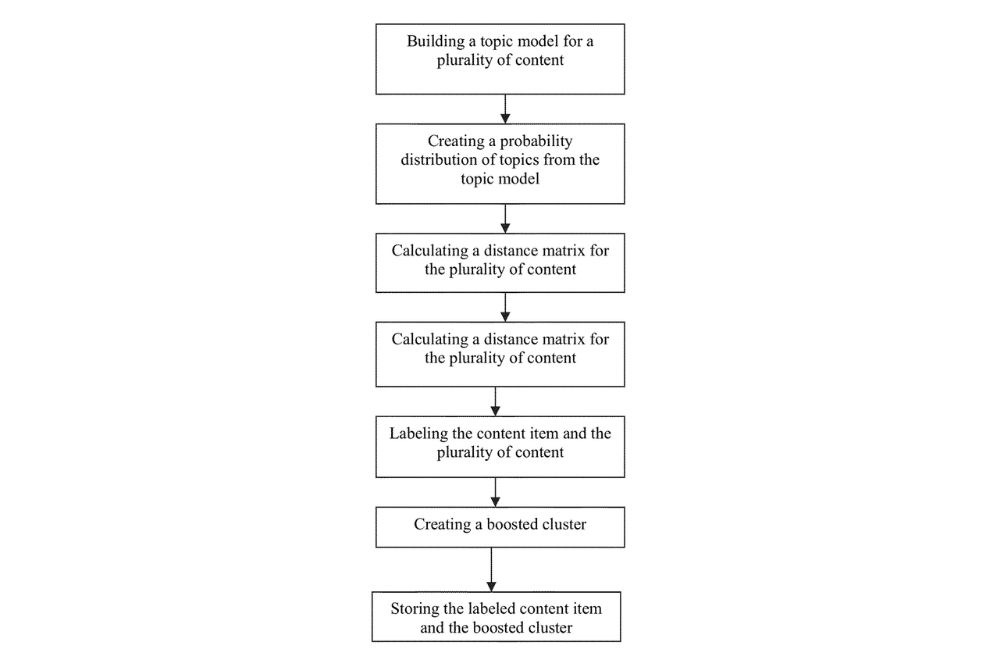
What’s fascinating is that content that does not belong to a cluster may be completely ignored by the search engine, regardless of whether it contains any of the other content quality signals.
Implications for SEO
The obvious inference is that building content for your website within a specific topic and not straying too far from your main area of expertise is advantageous to SEO. In practice, this would include developing tiered content strategies and organizing smaller sites around much larger pillar pages.
- Documents are scored based on the date they were created.
The patent covers ranking a page depending on its age, at least in part. The page’s age can be calculated in a number of ways, the most frequent of which is the date it was first crawled.

The patent goes on to claim that the average link rate can be calculated by dividing the total number of backlinks to a website by the age of the page. After that, the average link rate is employed as a partial ranking component.
Implications for SEO
While rating a page based on its age is nothing new, the average link rate is a less well-known concept. What this means is that the weight of each individual backlink is reduced as the website becomes older. So, as your page becomes older, you will need to keep adding more and more backlinks if you want it to rank. Create evergreen content, update it periodically, and recirculate it through your marketing channels to achieve this.
- A search engine that is based on the context of the user
Google has released a number of documents relating to keywords throughout the years, shifting its ranking criteria from keywords to keyword phrases to context terms. The most recent of these documents talk about how to create topical vocabularies that go beyond keywords and contain contextual terms, or words that are vaguely related to a topic.
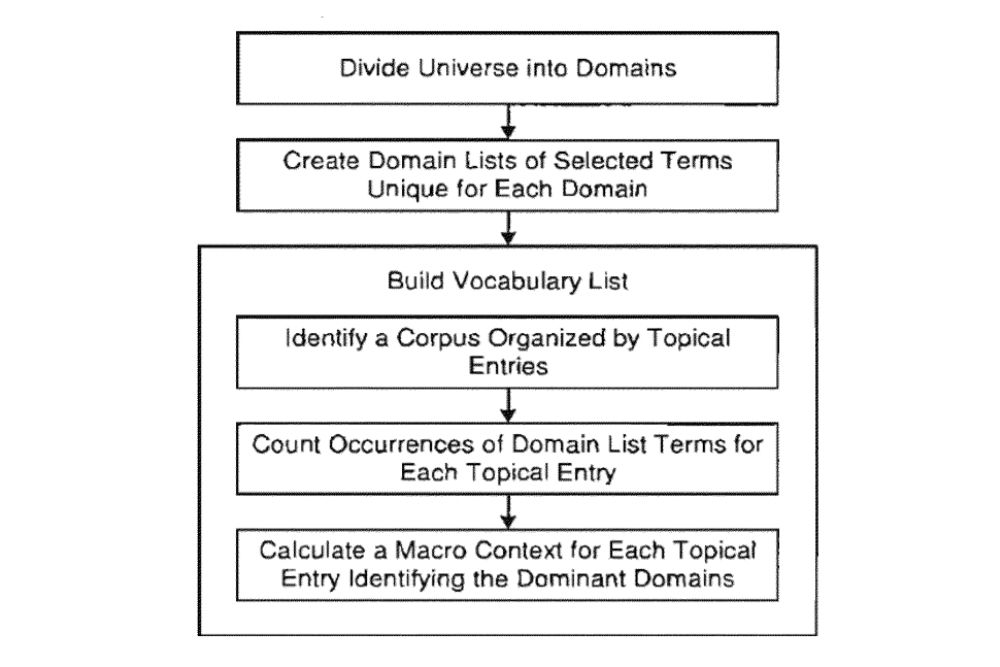
Implications for SEO
As things stand now, it is probable that Google likes pages with a lot of context terms over pages with just keywords. For example, if you are writing a page about the greatest down jackets, Google would anticipate seeing terms like water, trekking, and geese.
- Keep an eye on the time-based rating.
It appears that Google may consider visit duration to be a ranking element, as evidenced by patents on video view times and website duration performance. The patents outline how to rank a page based on how well it performs against a benchmark of visit durations for a specific sort of content.
Implications for SEO
It may be beneficial to your rankings if you can find techniques to keep your visitors engaged. One apparent approach to accomplish this is to develop high-quality, comprehensive content that incorporates a range of media and interactive components (images, videos, polls, comment prompts, etc.).
- Changing the ranking of search results based on implicit user feedback
This patent previously relied on a simple click-through rate to rank search results, but it has since been modified to employ a weighted click-through rate. The updated version seeks to strike a balance between clicks and visit durations, which sounds a lot like a bounce rate variation. Basically, the more clicks and time the user spends on your content, the better.
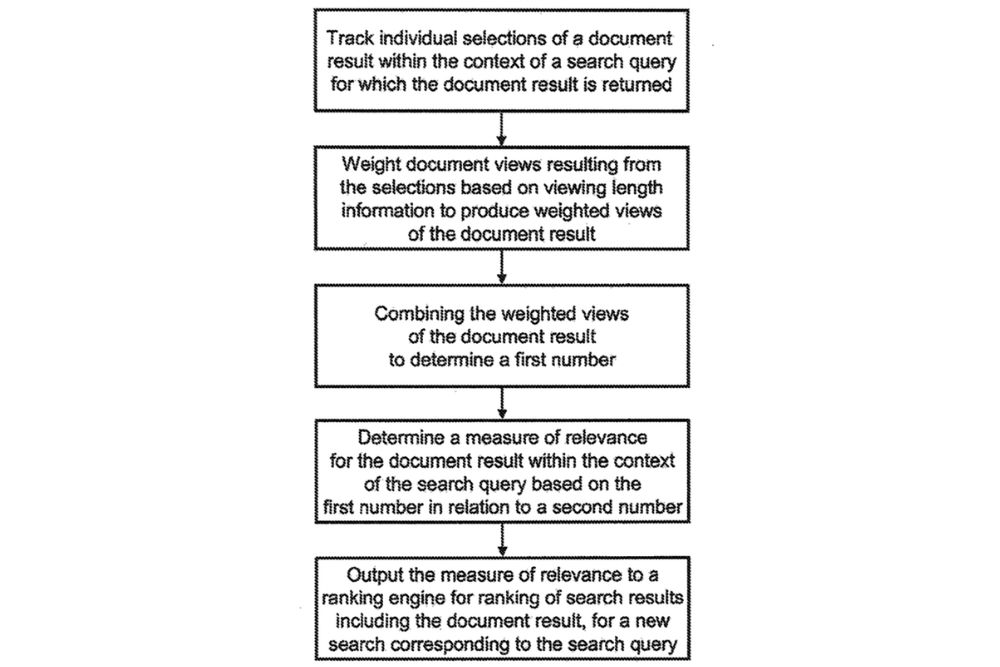
Implications for SEO
The question of whether Google utilizes behavioral analytics to rank pages is constantly up for dispute. Whatever the situation may be, the technology is patented, so there is an opportunity. It would imply that you should take extra precautions to make your content alluring in search results, from titles to meta descriptions to incorporating structured data within your content.
- Estimating the quality of a website
Google has filed a variety of patents that employ n-grams (word strings) to assess copy quality. The program creates a language model by using a set of pages of known quality. It then applies the model to a fresh page to determine how similar the text is to a quality benchmark and assigns a ranking to the page.
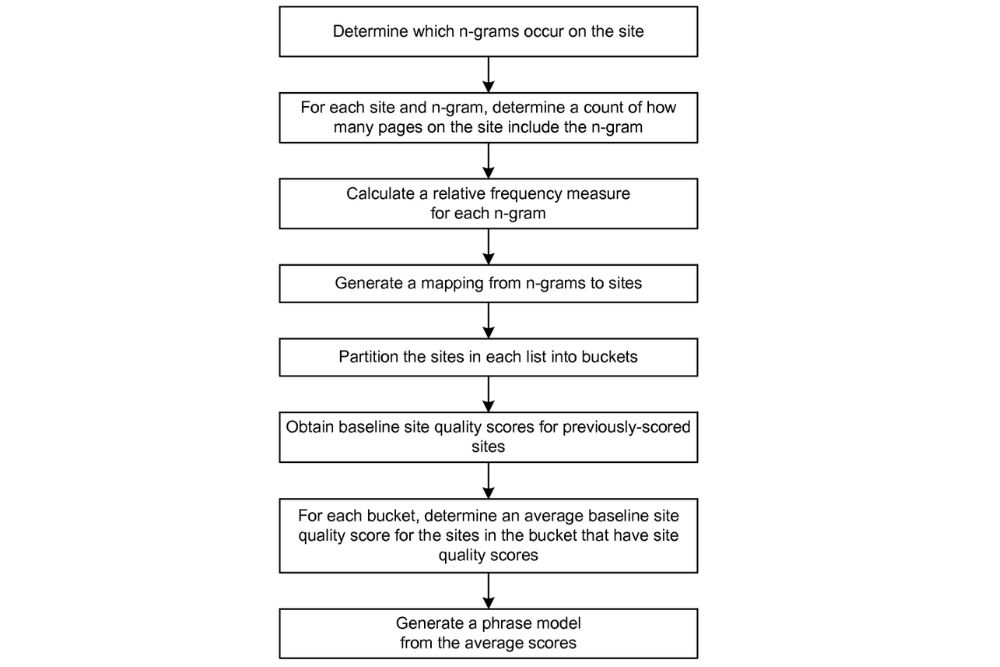
Implications for SEO
N-grams can be used to detect gibberish, keyword stuffing, and poor writing quality. That means you should avoid scraped, autogenerated content in favor of hiring skilled writers or, at the very least, hiring proofreaders to enhance your copy.
- Results for intent questions in natural language
The mechanism for establishing featured snippet eligibility is described in the patent. Basically, whenever a natural language question with very obvious intent exists, such as what are the seven deadly sins, Google will scan the top-ranking pages for a header that sounds extremely close to the query, followed by a concise response, such as a list of seven sins.
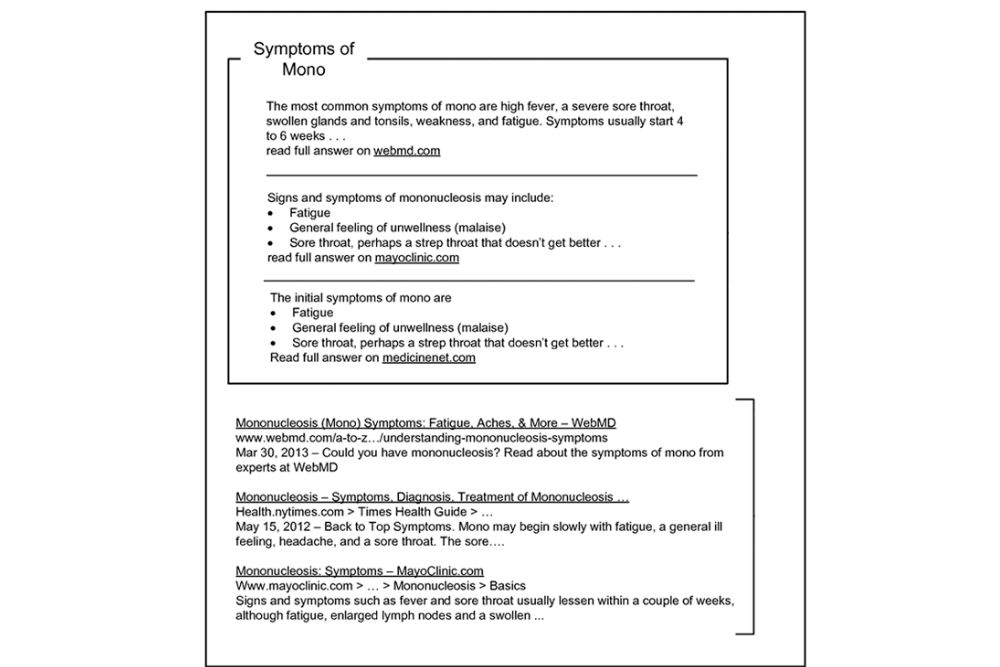
Implications for SEO
Keep in mind that each heading in your material (H2-H6) has the potential to be utilized in a rich snippet. Basically, each of your headings should be written as if it were a question (natural language + keywords), with the response to the query appearing right below the heading. One of the headings in the sample below is an exact match for the query “how to change a diaper,” and it is followed by a numbered list of steps:
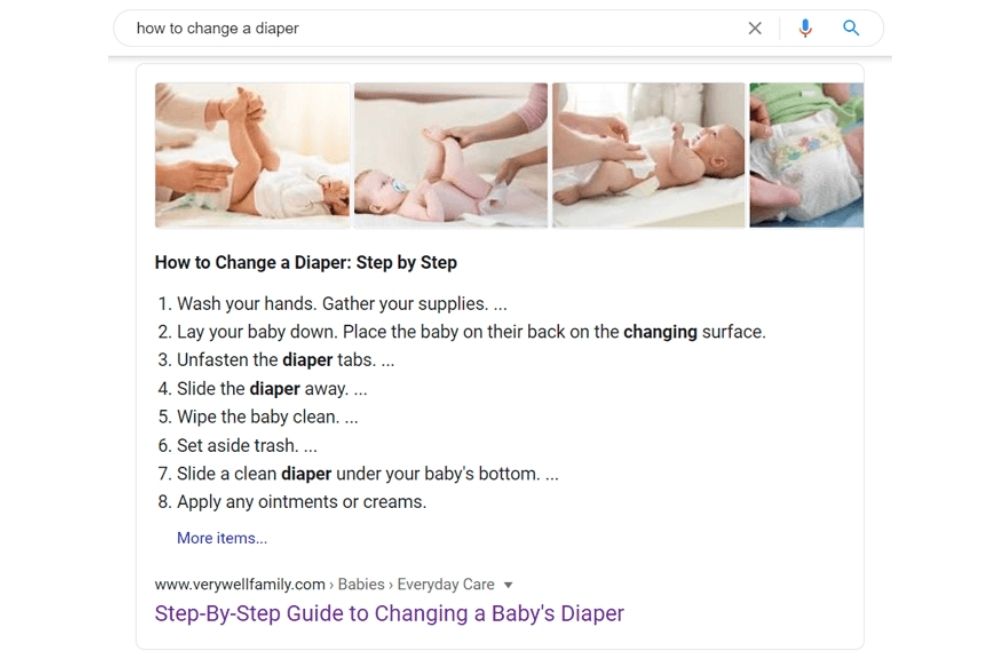
- User behavior and/or feature data are used to rank documents.
This is one of the more mind-numbing patents to read, but the bottom line is how instructive your anchor sentences are. The patent outlines analyzing numerous signs to determine the likelihood of a user clicking on a link. The more likely the link is to pass, the more juice it will carry.
Implications for SEO
When developing anchor texts for backlinks and internal links, use recommended practices. Make sure the anchor matches the page it links to, contains keywords, and is surrounded by relevant phrases.
- Choosing a resource’s quality indicator
Another patent relating to links reveals the significance of individual backlinks. The patent proposes a technique for determining the value of a connection by examining how much traffic it generates. If no one clicks on the link, it does not pass any value to the linked website.
Implications for SEO
You are definitely tempted to incorporate as many links per post as possible when establishing backlinks, especially through guest posts. According to this patent, you will be wasting your time if you do not click on the links that are not being clicked on. As a result, you should include fewer links to enhance the likelihood of each one being clicked. Buying links from no-one-visits websites is also possibly pointless.
- Identifying local specialists in order to conduct a local search
Rating local results based on weighted reviews from local experts is described in the patent. Experts are selected using thresholds for the total number of reviews, the amount of local reviews, and the number of reviews for a specific business category. Some reviewers are tagged as local guides on Google My Business, therefore it appears that this patent has been partially executed.
Implications for SEO
While there is no method to directly request GMB evaluations from local guides, there are some strategies to encourage more of your customers to provide reviews. You can ask them in person when doing business, send them a follow-up email, give loyalty program perks, or invite them to post feedback on GMB via social media. Also, if any of the local guides give you a negative rating, you will have to go out of your way to make them happy.
Finally, some thoughts
Although Google patents are quite fascinating, some of them are downright creepy, such as the ones that recommend using the phone’s camera to observe how users respond to search results or listening to background noise (TV, conversations, etc.) and collecting query context. They do, however, provide vital insight into the difficulties that Google faces and the solutions that they are attempting to develop. As a result, these insights assist us in producing better content.
